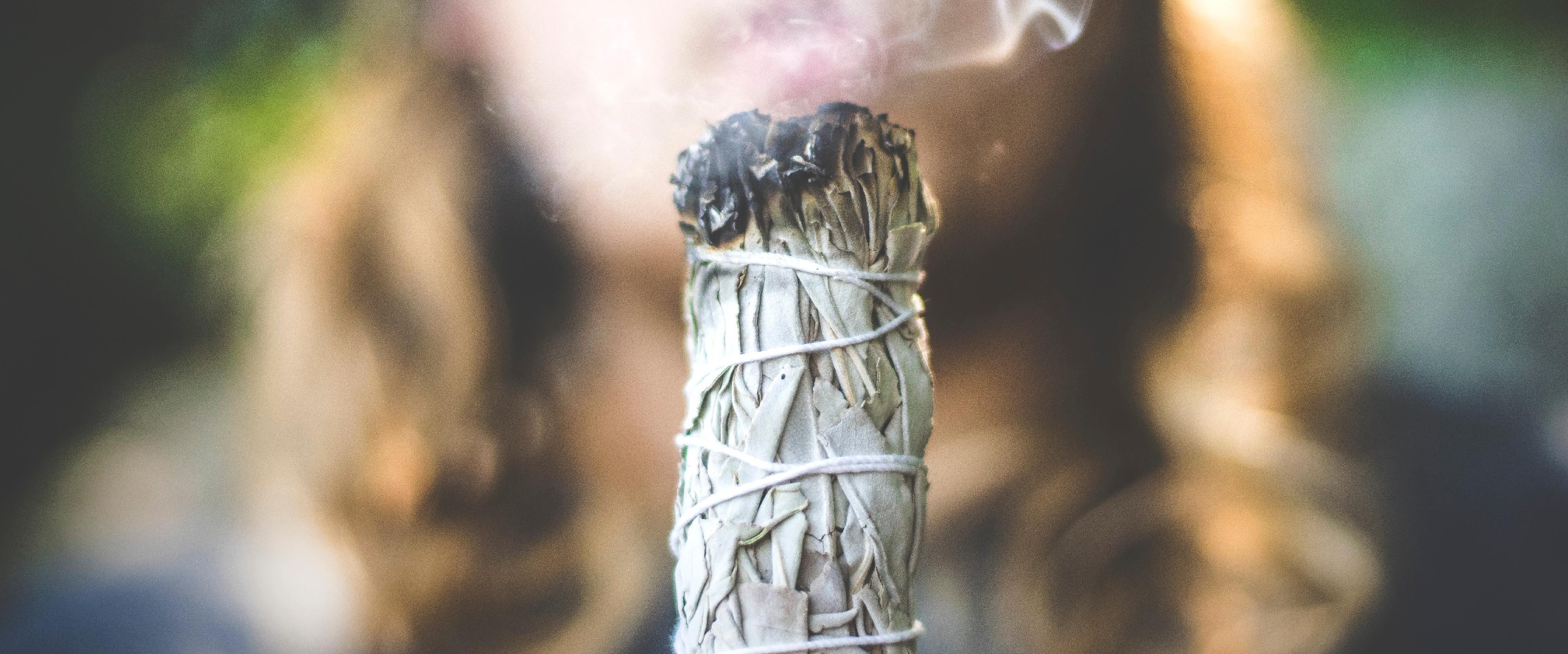What is it?
Indigenous Traditional Healing is a holistic practice that aims to treat imbalances in a person’s body, mind, emotions, and spirit together. These imbalances are thought to be the cause of illness and to result from ignoring sacred, natural laws. Tradition healing practices are distinct and culturally specific to the people who are practicing them. In Canada, First Nations, Inuit, and Métis view health as a balance of physical, emotional, mental and spiritual elements. These four elements can be impacted by the individual, their family, their community and the environment. For example, connection to the land is an important aspect of healing for the Inuit. Being out on the land and away from one’s community can bring calmness to the body and mind by removing outside influences and in turn promote personal well-being.
Below, we highlight some of the more popular Indigenous Traditional Healing practices. It is important to note that though these are practiced by many, not all Indigenous groups engage in all these traditions.
Healing circles are convened to discuss a problem or question. Members sit in a circle, and the leader, facilitator, or elder opens with a prayer. A talking stick is passed around the circle; only the person holding the stick can speak. The healing circle concludes when the talking stick has passed one time around the circle without anyone being interrupted. For cancer patients and their caregivers, the healing circle is a place to pour out their thoughts, feelings, and experiences, and get support and healing.
Sweat lodges are dome-shaped structures used for purification and healing rites. Inside, stones are heated on a fire and water is poured on the stones to create steam. This steam helps ceremony participants sweat out toxins and impurities and is thus thought to promote healing.
Smudging is a ceremony to cleanse a person or place of negative thoughts and feelings, to purify the soul, and to bring clarity to the mind. In a shell or small container, the four sacred plants (sage, sweetgrass, cedar, and tobacco) are ignited. The flames are blown out and the resulting smoke is wafted around a person or place with a hand or eagle feather. After the ceremony, the ashes are disposed of on the bare soil. These ashes are thought to contain the negative thoughts and feelings.
Indigenous teachings are summarized by the Medicine Wheel, a circle that represents the cycles of life. It is divided into four quadrants, each with a different colour, to represent the four seasons, four directions, four sacred animals, four sacred plants, and other elements of importance in people’s lives. Traditional healing can also be based on the season as the seasons can influence the practices being done. In addition to these ceremonies, various Indigenous healers use plants, trees, herbs, soils, food, and water from the land around them.
How can it help?
Indigenous Traditional Healing has not been shown to cure cancer, but it can provide psychological, emotional, and spiritual support to cancer patients and their families which can help with stress, anxiety, and depression. It’s important to tell your primary care team if you use these or any other Indigenous Traditional Healing, especially if you are using plants or herbs that may interact with conventional therapies.
How do I find a group or practitioner?
Some hospitals and cancer centres have Indigenous health care patient navigators that you can speak to if you are interested in using traditional healing as a complementary therapy. We also provide you with a few resources below to get you started:
National
- Inuusinni Aqqusaaqtara – My Journey – Cancer Resources for Inuit
- Cancer Healing Circle Guide for Inuit
- The Inuit Way
Alberta
British Columbia
- Aboriginal Patient Liaison/Navigator Contact List
- Living with Cancer, Métis edition and First Nations edition
- Prince George: BC Cancer Agency Centre for the North
Manitoba
- Winnipeg Regional Health Authority Indigenous Health
- CancerCare Manitoba First Nations Patient Guide
Newfoundland
- Eastern Health Aboriginal Patient Navigator Program
Nunavut
- Interviewing Inuit Elders: Perspectives on Traditional Health
- Ilisaqsivik – Mental Health and Counselling Program
Ontario
- Indigenous Navigators
- Hamilton: Juravinski Cancer Centre Aboriginal Patient Navigator
- Kingston: Cancer Centre of Southeastern Ontario Aboriginal Patient Navigator
- Oshawa: Durham Regional Cancer Centre Aboriginal Patient Navigator
- Ottawa: The Ottawa Hospital Champlain Indigenous Cancer Program
- Sudbury: Northeast Cancer Centre Aboriginal Patient Navigator
- Thunder Bay Regional Health Sciences Centre Indigenous Patient Navigator, Regional Cancer Care
- Toronto Central Regional Cancer Program Indigenous Patient Navigation Specialist
- Windsor Regional Cancer Centre Aboriginal/Indigenous Navigator
Saskatchewan
Yukon
Photo by Brittany Colette on Unsplash







